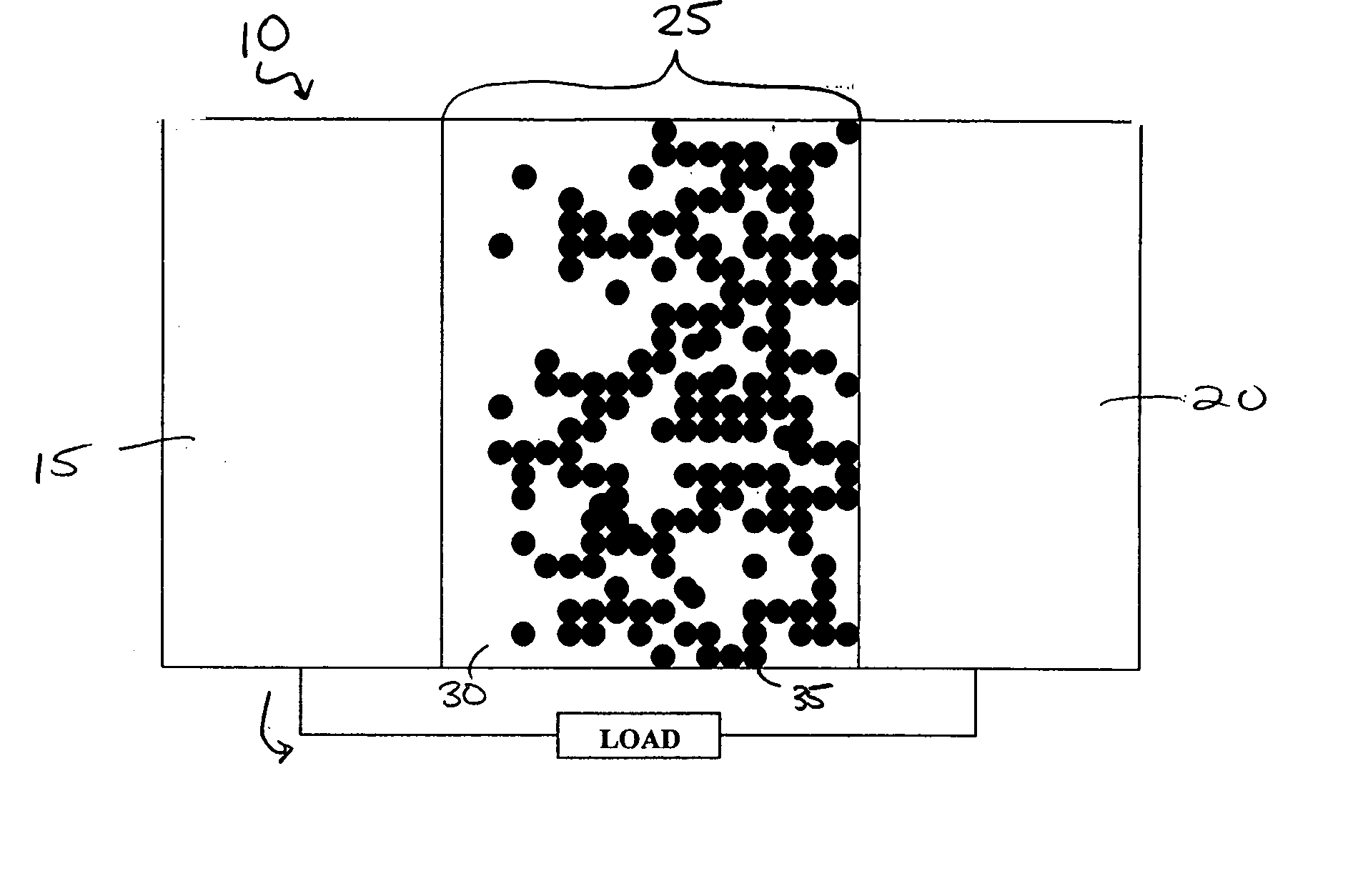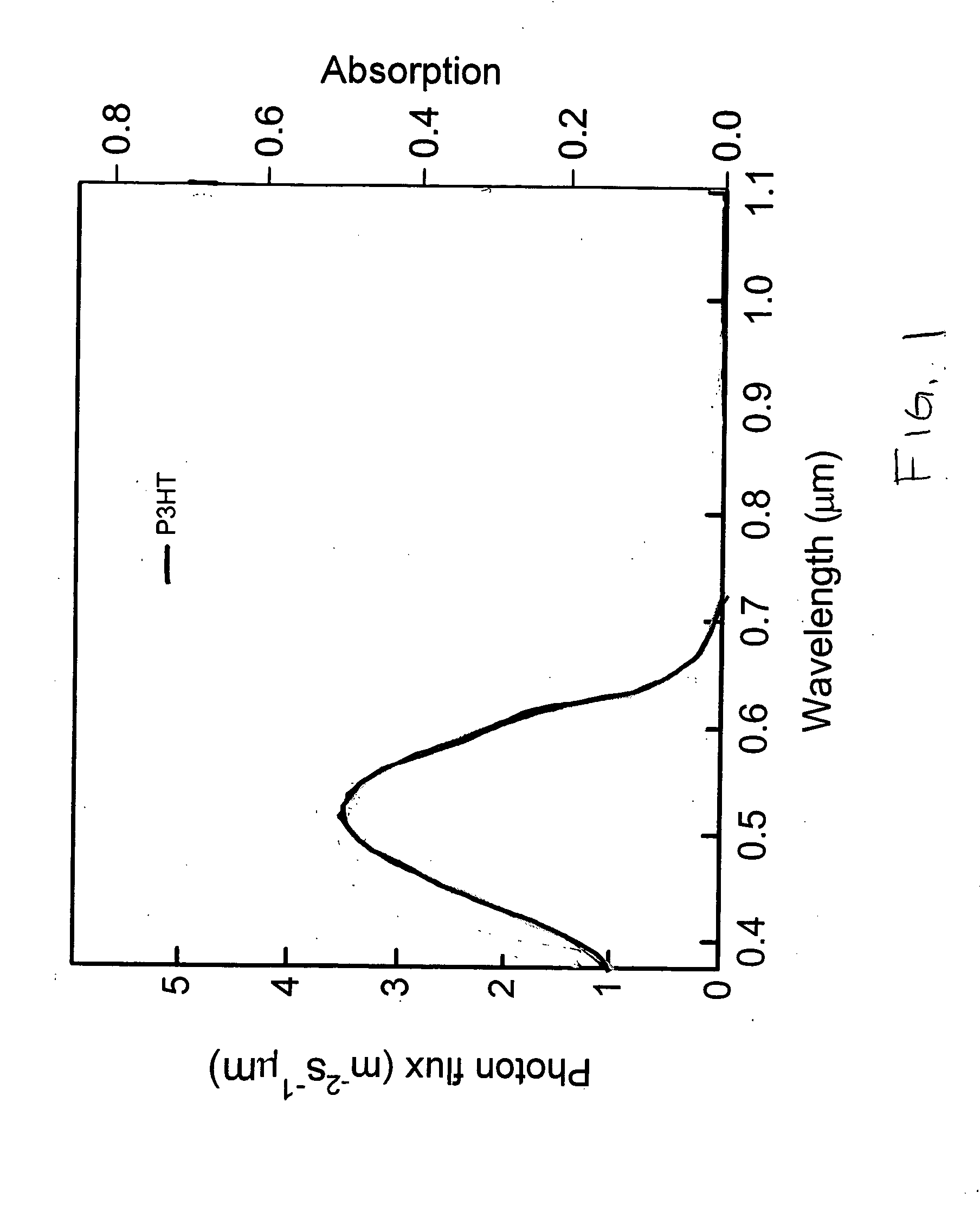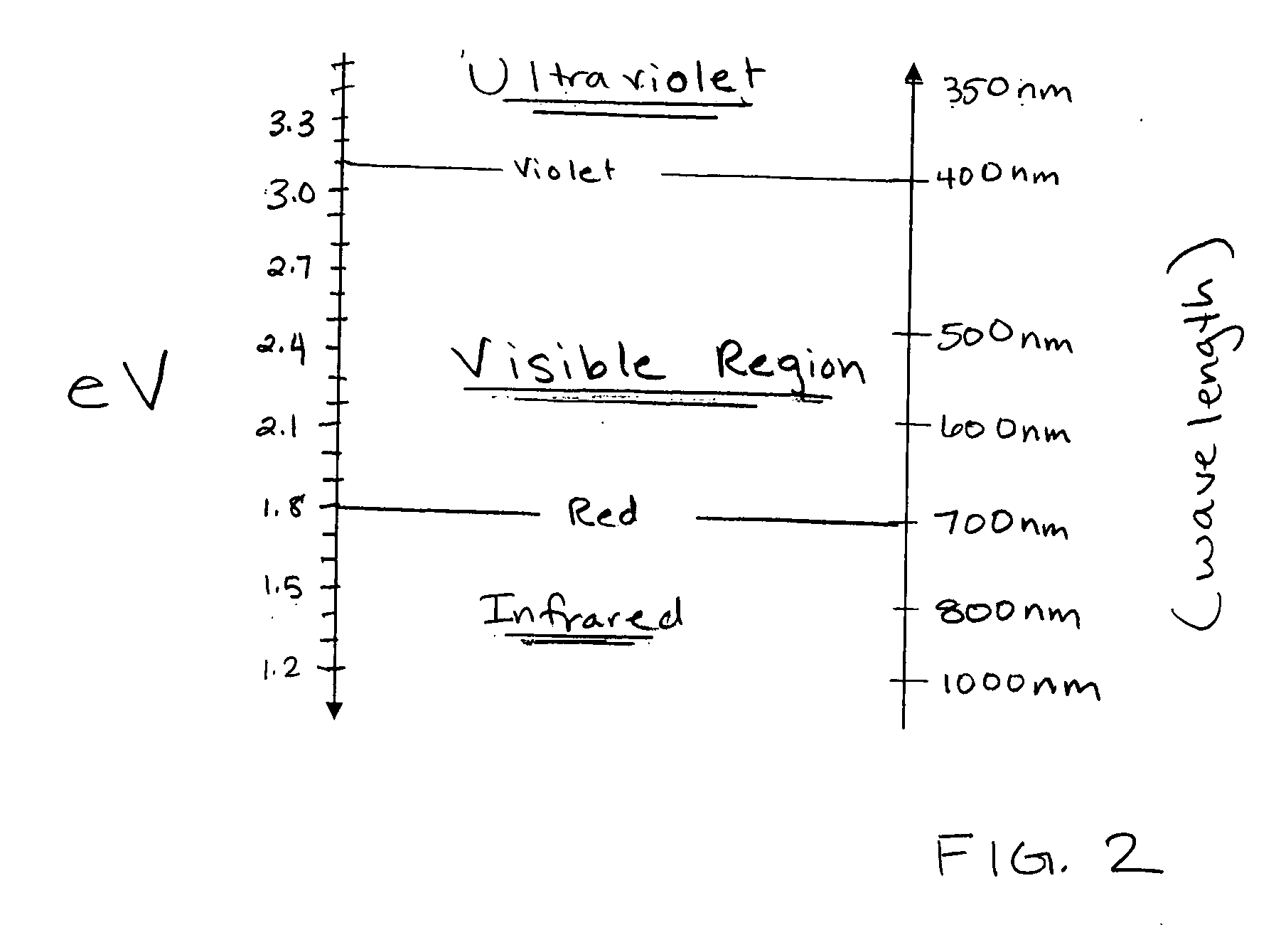Organic solar cells including group IV nanocrystals and method of manufacture
a solar cell and nanocrystal technology, applied in the field of solar cells, can solve the problems of low fill factor and short circuit current, low efficiency of known bulk heterojunction organic solar cell devices, and inefficient collection of generated excitons before they recombine, so as to increase the absorption capacity of bulk heterojunction materials
- Summary
- Abstract
- Description
- Claims
- Application Information
AI Technical Summary
Benefits of technology
Problems solved by technology
Method used
Image
Examples
Embodiment Construction
[0026] The present invention provides an improved bulk heterojunction material for an organic solar cell and a method of making the bulk heterojunction material. In general, the bulk heterojunction material includes an organic absorber (e.g., an organic polymer) and a plurality of group IV nanocrystals (e.g., silicon nanocrystals, germanium nanocrystals, silicon-germanium nanocrystals) disposed within the organic absorber.
[0027] The organic absorber is a photoactive material that generates excitons (i.e., an electron / hole pair) in response to sunlight interaction. Typically, due to their band gap values (e.g., between about 1.9 eV to 3.5 eV), the organic absorber is most responsive to light having a wavelength between (350 nm and 650 nm). See FIG. 2, which shows the visible region of the electromagnetic spectrum in terms of wavelength and corresponding energies in eV. As a result, the organic absorber tends to generate excitons in response to sunlight having a wavelength between ab...
PUM
| Property | Measurement | Unit |
|---|---|---|
| weight percent | aaaaa | aaaaa |
| weight percent | aaaaa | aaaaa |
| weight percent | aaaaa | aaaaa |
Abstract
Description
Claims
Application Information
 Login to View More
Login to View More - R&D
- Intellectual Property
- Life Sciences
- Materials
- Tech Scout
- Unparalleled Data Quality
- Higher Quality Content
- 60% Fewer Hallucinations
Browse by: Latest US Patents, China's latest patents, Technical Efficacy Thesaurus, Application Domain, Technology Topic, Popular Technical Reports.
© 2025 PatSnap. All rights reserved.Legal|Privacy policy|Modern Slavery Act Transparency Statement|Sitemap|About US| Contact US: help@patsnap.com



